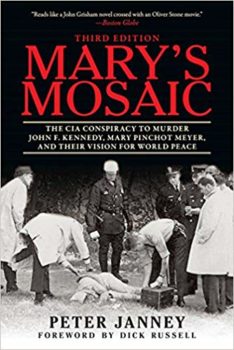
Estimated reading time: 9 minutes
If, like me, you were alive and aware on November 22, 1963, you’ve never forgotten the day. It was mid-afternoon in New York, and I had just arrived for a graduate course in international relations at Columbia University, only to discover a small number of my classmates aimlessly milling around, most of them in tears, some hugging one another, as one informed me that President Kennedy had been shot. The class had been canceled, and I wandered away with a classmate to learn more from TV news at his nearby apartment. He and I remained glued to that small, black-and-white screen the rest of the day and the following. The unthinkable had happened, and it seemed that nothing would ever be the same. It would be decades before evidence emerged explaining why JFK was killed.
A flood of hasty conspiracy theories
In the months that followed, as Lyndon Johnson claimed the Presidency for his own, the war in Vietnam quickly heated up, and the Warren Commission hastily assembled, eventually reporting that Lee Harvey Oswald had single-handedly assassinated the President, as all the news reports had suggested. However, almost since the day of Kennedy’s murder, conspiracy theories began to swirl about, those from the Right finding connections with Fidel Castro and the KGB, those from the Left claiming the participation of the CIA, the Mafia, the Pentagon, Big Business, and sometimes Lyndon Johnson.
Mary’s Mosaic: The CIA Conspiracy to Murder John F. Kennedy, Mary Pinchot Meyer, and Their Vision for World Peace by Peter Janney (2012) 636 pages ★★★★★
“Leave it to the Commission”
Like many Americans, I paid little attention to all the speculation. Leave it to the Commission, I thought. They’ll find out the truth. Who can do a better job explaining why JFK was killed? For years afterward the books came out, spinning elaborate tales of skullduggery in high places. I ignored them all.
Now I know better. The Warren Commission was a sham. The leadership of the CIA was involved in the assassination. Probably not alone, but the CIA was at the center of the plot. And if you doubt those statements, I suggest you read Mary’s Mosaic, by Peter Janney. It’s not only a treasure-house of shocking revelations about recent U.S. history—many of which have come to light only in recent years—but a story far too strange for fiction.
The murder of a beautiful woman with an aristocratic heritage
The central subject of this extraordinary book is the murder of Mary Pinchot Meyer in October 1964. Mary was the niece of Gifford Pinchot, a Teddy Roosevelt confidante, the first head of the U.S. Forest Service, and a former two-term Governor of Pennsylvania. Previously a journalist, she was a practicing artist in middle age in the early 1960s and prominent in Washington social circles. She was also so striking that practically everyone who spoke about her commented on her beauty.
What the public knew at the time was merely that Washington D.C. police had arrested a terrified young African-American man whom two witnesses identified as standing over her body as it lay on the tow-path by the Potomac Canal in Georgetown. When the alleged killer finally went to trial in 1965, he was acquitted as the result of unusually skillful courtroom work by his pro bono attorney.
A clever frame-up for the murder
Later—in many cases, decades later—it became clear that the man arrested for the killing had been elaborately framed. Here are just some of the salient facts that prove the CIA was deeply involved in the murder of Mary Pinchot Meyer:
- The first witness testified at the trial that the man standing over Mary’s body was stocky, between 5’8″ and 5’10” in height, and weighed approximately 185 pounds. The accused stood barely 5’3-1/2″ and weighed 130. In other words, he was a scrawny little guy. There were many other holes in the police’s case against the man, but it was this discrepancy that seemed to have won the day with the jury.
- Mary was murdered around 12:30, her body discovered soon afterward, and declared dead at 2:05. However, her identity wasn’t known until after 6:00 pm, when her brother-in-law, Ben Bradlee (yes, the managing editor of the Washington Post), went to the morgue to confirm it was she. Meanwhile, Mary’s ex-husband, Cord Meyer, a senior officer at the CIA, received a call in New York at around 2:30 that Mary had been killed. The caller was a fellow senior CIA official who also phoned the news around the same time to James Jesus Angleton, the CIA’s head of counterintelligence. In other words, top officials at the CIA learned that Mary was dead hours before anyone else, even the police, knew who she was.
- The night of Mary’s murder, Bradlee and Angleton entered Mary’s art studio and carried away her diary and a number of other personal papers, which Angleton kept.
If we knew the truth about Mary’s murder, it would go a long way toward explaining why JFK was killed.
The President’s mistress and her influence on JFK
Why all the skullduggery surrounding the murder of a Washington socialite, you might ask? Well, it transpired that Mary had been sleeping with JFK for several years, and the two were in love with each other. JFK was a sex addict and continued having sex with an untold number of other women, but Mary was special. By 1963 he was planning to divorce Jackie on leaving the White House and marry Mary. His brother Bobby, his closest male friend, and Mary’s closest friends, all were aware of these facts.
Mary came from a family of suffragists and pacifists and was unalterably opposed to war. She was also a free spirit who had sought out Timothy Leary at Harvard to experience LSD, which she introduced to the President. Under Mary’s influence and the influence of the drug, and in the wake of the nearly catastrophic Cuban Missile Crisis that came so close to incinerating the planet, JFK resolved to sidestep the Pentagon and the CIA and seek world peace in a serious way.
In fact, he was already engaged in secret negotiations with Soviet Premier Nikita Khrushchev about a test ban treaty and other confidence-building measures that, they agreed in writing, would lead to an end to the Cold War. He had also dispatched a personal envoy to Cuba who was meeting with Fidel Castro about similar measures on the day he was murdered. And, weeks before his assassination, JFK issued an executive order to bring back 1,000 troops from Vietnam in 1963 and all the rest by 1965. All this has been documented.
Mary was convinced the CIA was involved
When President Kennedy was murdered, Mary was convinced that the CIA was involved. She was close to many prominent CIA officials, including her ex-husband and Jim Angleton, who had been the godfather of their three sons. Mary had been making the rounds in Washington and elsewhere, asking questions about the assassination and making no secret of her suspicions. She was determined to learn the truth and make it widely known.
Mary had been a life-long diarist who wrestled with her most intimate thoughts in writing. Her diary, which has never publicly surfaced, was thought by all her friends as well as the CIA to contain revelations not just about JFK’s turn toward peace but about his murder as well. The few who had seen it confirmed those suspicions.
The high stakes in JFK’s Presidency
It’s difficult for anyone who didn’t experience that time in our history to appreciate the high stakes in politics at the top in Washington, D.C. then:
- Early in Kennedy’s Presidency, the Joint Chiefs of Staff, spearheaded by a notoriously bellicose Air Force general named Curtis LeMay, presented a plan to launch a pre-emptive nuclear strike against the USSR in June 1963. Kennedy disgustedly rejected the plan out of hand—and thereafter was deemed “dangerous” by the Chiefs and their allies in the CIA. For its part, the CIA essentially ignored orders from the White House from that time on.
- Ever since 1953, when Allen Dulles was named Director of the CIA, the agency had been compiling an astonishing record of illegal behavior. The agency had overthrown the governments of at least six nations, not just Iran and Guatemala (as is well known). CIA agents and contractors had attempted to assassinate a number of world leaders in addition to Fidel Castro, and the agency had undertaken extensive surveillance of U.S. citizens within the borders of the country. All this, too, has been well documented.
- Following the disastrous Bay of Pigs invasion in 1961, President Kennedy was incandescent with fury at the CIA, and they with him. Kennedy wanted to break the agency up into “a thousand little pieces” and scatter them about the government. He fired Director Allen Dulles and replaced him with an inexperienced outsider, effectively leaving the agency under the control of counterintelligence chief Jim Angleton and his inner circle, a handful of other wealthy sons of Yale, Princeton, and other Ivy League colleges who held high-ranking posts in the agency.
Given this set of facts, is it any wonder that the CIA would kill the President?
Newly available information explaining why JFK was killed
After reading Mary’s Mosaic, my mind is awash with a hundred other facts and factors, but I won’t reveal any more. Although the focus is on Mary Pinchot Meyer’s murder, the book contains extensive information, much of it revealed only within the last two decades, about JFK’s assassination. It makes the case convincingly.
About the author
According to the book’s website, author “Peter Janney grew up in Washington, D.C. during the Cold War era of the 1950s and 1960s. His father Wistar Janney was a senior career CIA official. The Janney family was intimately involved with many of Washington’s social and political elite that included the family of Mary and Cord Meyer, as well as other high-ranking CIA officials such as Richard Helms, Jim Angleton, Tracy Barnes, Desmond FitzGerald, and William Colby.”
For related reading
You’ll find this book on The 40 best books of the decade.
I’ve read and reviewed two biographies of Allen Dulles, who remained influential in the CIA long after JFK fired him: The Devil’s Chessboard: Allen Dulles, the CIA, and the Rise of America’s Secret Government by David Talbot, reviewed at When America’s secret government ran amok, and The Brothers: John Foster Dulles, Allen Dulles, and Their Secret World War by Stephen Kinzer, reviewed at They shaped US foreign policy for decades to come.
I’ve also reviewed a remarkable novel about Mary Pinchot Meyer, The Lost Diary of M by Paul Wolfe (John F. Kennedy’s lover kept a diary, and it was explosive).
For other perspectives, see 11/22/63 by Stephen King (Stephen King’s take on the JFK assassination) and Surrounded by Enemies by Bryce Zabel (What if JFK had survived Dallas?).
You might also take a look at the following posts:
- Top 10 nonfiction books about politics
- Top 20 popular books for understanding American history
- 20 good nonfiction books about espionage
And you can always find my most popular reviews, and the most recent ones, on the Home Page.



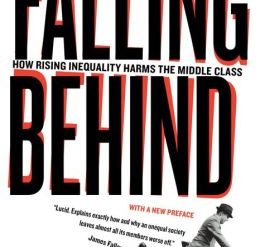
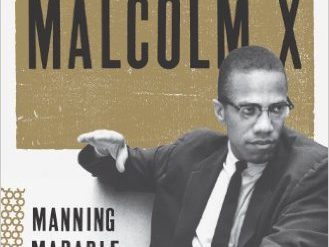
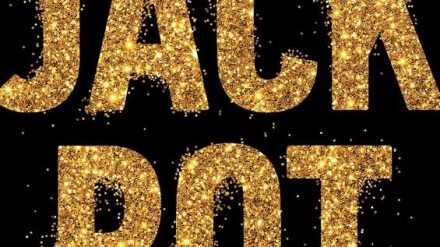

















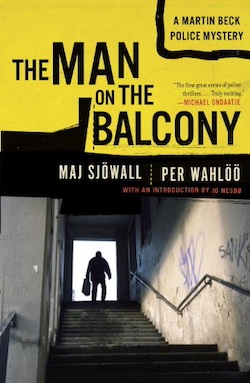




Hello, I just found out about your website and have started receiving your reviews. I want thank you for all your work in preparing them. I love them all and they give great suggestions for me and my husband to read. I am a retired librarian and I am always looking for more great reviews. I wish I had found your website before. Thank you.
Thank you! I appreciate the kind words, and I’m glad you and your husband find my reviews useful. Cheers,
mal